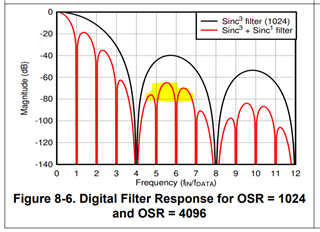Other Parts Discussed in Thread: ADS127L18, ADS112U04, , ADS1220, ADS122U04
Tool/software:
Hi TI Team
I have a question/confirmation on how to use this ADC correctly. I want to have a Samplerate of 10SPS to FIlter 50/60Hz and to achieve it I need to use a clock of 327680 Hz on the CLKIN pin. I tested it with the EVM Board and it seems to work. Can you confirm that this scenario is OK?! And is it also safe to use 25MHz on the SCLK to read the Data from the ADC?
Thank you in advance.
Regards Theo




